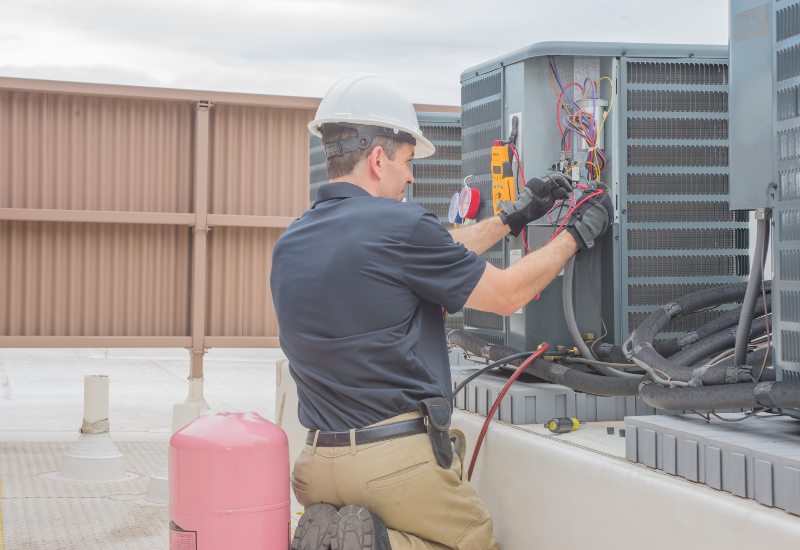When Should You Replace Your Old HVAC Thermostat?
When Should You Replace Your Old HVAC Thermostat?
Your HVAC thermostat is the brain of your home’s heating and cooling system. It tells your furnace or air conditioner when to turn on and off to maintain a comfortable indoor temperature. But over time, thermostats wear out or become outdated, leading to inefficiency and comfort problems. Knowing when to replace your HVAC thermostat can save you from high energy bills and inconsistent home temperatures. Find out how to tell it’s time for a replacement and the benefits of upgrading to a modern thermostat.

Signs Your Thermostat Needs Replaced
Is your thermostat crying out for help? Watch for these signs it’s begging to be replaced:
- Manual design: Consider an upgrade if you’re still using a manual thermostat. These models require constant adjustment to maintain comfort. Analog thermostats are even worse, with a rudimentary dial rather than a digital readout that lacks the precision and efficiency of modern thermostats.
- Frequent performance issues: Constantly needing to adjust your thermostat or running into an unresponsive black screen is a sign your thermostat might be failing. Consider installing a new HVAC thermostat if you’re tired of making repeated repairs and adjustments.
- Inaccurate temperature readings: False readouts can cause your HVAC system to overwork or underperform, leaving you uncomfortable and driving your energy bills up. Compare your thermostat’s displayed temperature to a portable thermometer, and if it doesn’t match, it’s time to consider a new unit.
- Constant temperature shifts: Unstable indoor temperatures lead to comfort problems. If your home’s temperature constantly fluctuates despite setting the thermostat, it’s likely not functioning correctly.
- High energy bills: A malfunctioning thermostat can cause your HVAC system to run longer than necessary. If you notice a sudden spike in your utility bills without a change in usage, your thermostat could be the culprit.
- Short cycling: Short cycling occurs when your HVAC system turns on and off too frequently. A faulty thermostat could be to blame. Short cycling reduces efficiency and increases wear and tear on system components.
- Old thermostat: If your thermostat is over 10 years old, you’re missing out on the latest capabilities that enhance system efficiency and performance. Besides, thermostats often become less reliable after about a decade in use.
Types of Replacement Thermostats
When it’s time to replace your thermostat, you’ll find several brands and styles that offer enhanced features and greater efficiency. Take a look at the main types.
Programmable Thermostats
Programmable thermostats allow you to set specific temperatures for different times of the day or week according to your schedule. This helps you save energy by adjusting the temperature when you’re not at home or while you’re sleeping. The ability to set it and forget it is an incredibly convenient and consistent way to save energy.
You’ll find that most programmable thermostats come with one of these programming options:
- 7-day programming allows for customizable settings each day of the week, which is ideal if your family’s schedule varies every day.
- 5-1-1 programming lets you set a consistent weekday schedule with different settings for Saturday and Sunday.
- 5-2 programming comes with one schedule for weekdays and another for weekends.
Smart Thermostats
Smart thermostats take programmability to the next level. Some benefits include:
- Wi-Fi connectivity: Control your thermostat from anywhere with Wi-Fi access. You can edit the schedule on your smartphone, adjust the temperature on your way home from work, or use a compatible voice system like Google Nest or Amazon Alexa to change the settings from your sofa.
- Learning models: Today’s most advanced thermostats learn your schedule and preferences over time, adjusting the temperature automatically to maximize comfort and efficiency.
- Energy reports: Many smart thermostats provide energy usage reports, helping you track when you spend the most on heating and cooling and identify ways to save.
Can I Install My New Thermostat Myself?
You don’t need any special training to learn how to replace an HVAC thermostat. Consider installing it yourself if you’re comfortable with basic electrical work and have the proper tools.
However, if you’re worried about attempting a DIY installation, don’t hesitate to call an experienced HVAC technician for help. This professional can identify and address issues during installation, such as compatibility problems or wiring errors. They can also provide expert advice on the best thermostat settings for your home and ensure that your system is operating at peak efficiency.
Contact Grissom Heat & Air for HVAC Thermostat Replacement
Upgrading to a modern programmable or smart thermostat is worthwhile if your current unit is getting old or acting up. Grissom Heat & Air is here to help. You can supply your own thermostat or ask us to recommend the best model for your Tennessee home. Our technicians will then perform a fast, efficient thermostat replacement, delivering quality workmanship and personal attention you can count on. Contact us at (865) 238-4869 to schedule HVAC thermostat replacement in Knoxville or the surrounding areas.
